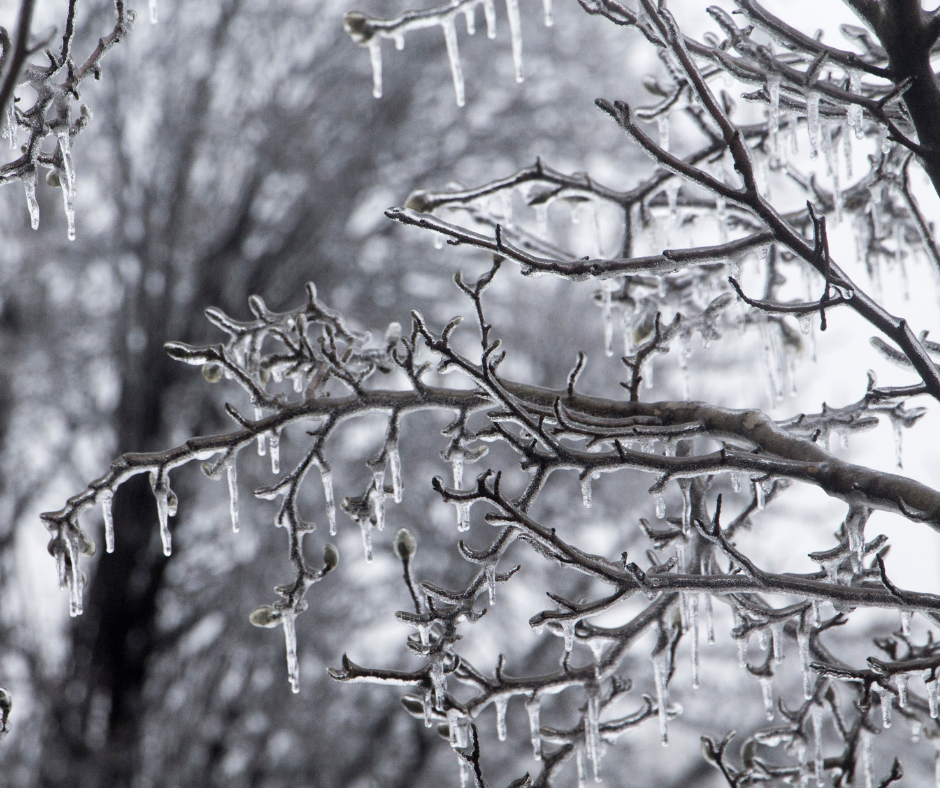Winter brings beautiful snowy landscapes but also unique challenges for homeowners, especially regarding roof maintenance. Snow, ice, and freezing temperatures can wreak havoc on your roof if you’re unprepared. By understanding the most common types of winter roof damage and taking proactive steps, you can prevent costly repairs and keep your home safe and comfortable throughout the season.
Ice Dams

One of the most common winter roofing issues is ice dams. These form when warm air from your attic melts snow on your roof. As the melted water flows down and reaches the colder edges, it refreezes, creating a barrier of ice. Over time, this barrier prevents water from draining properly, which can lead to leaks, shingle damage, and even structural problems. Ice dams are not only a headache but can also result in significant expenses if left unaddressed. Addressing attic insulation and ventilation is critical to mitigating this issue. A properly insulated attic minimizes heat loss, keeping the roof temperature consistent and reducing the likelihood of ice dam formation.
Compacted Snow

Another serious concern during winter is the added weight from accumulated snow. Snow may seem light and fluffy, but as it compacts, it can place a significant strain on your roof. Heavy snow loads can weaken the roof structure, causing warping, cracking, or even a collapse in severe cases. Homeowners should pay close attention to snowfall throughout the season and safely remove excess snow to alleviate this strain. Using a roof rake is a safe and effective method for removing snow, but it’s essential to avoid sharp tools that could damage shingles or other roofing materials.
Heavy Condensation

Condensation within the attic is another winter challenge often caused by inadequate ventilation. When warm air from inside the house meets the cold air in the attic, moisture can form, leading to mold growth and wood rot. Over time, this weakens the roof’s structural integrity and creates a less healthy home environment. Installing and maintaining proper ventilation can help regulate attic temperature and reduce the buildup of moisture, preventing these problems from escalating.
Clogged Gutters

Gutters also play a crucial role in maintaining your roof’s health during winter. When gutters and downspouts are clogged with leaves, twigs, or other debris, they cannot drain water effectively. This blockage can cause water to back up and freeze, leading to damage not only to the gutters but also to the roof, siding, and even the home’s foundation. Regular gutter maintenance before and during winter ensures that water flows freely, reducing the risk of ice formation and its associated damages.
Overhanging Trees

Overhanging tree branches pose an often-overlooked risk during winter. Branches laden with snow and ice can break under their own weight, falling onto the roof and causing significant damage. Trimming back overhanging branches before winter begins is a simple yet effective way to prevent these accidents and protect your roof from unnecessary harm.
Professional Inspections
Perhaps the most critical step in winter roof care is scheduling professional roof inspections. A skilled roofing contractor can identify vulnerabilities in your roof and address them before they become costly issues. Inspections both before and after winter ensure that your roof remains in good condition and any problems caused by winter weather are quickly resolved. Professional expertise is invaluable in maintaining your roof’s longevity and the safety of your home.
Winter is tough on roofs, but with proper preparation and maintenance, you can minimize the risks and enjoy the season worry-free. By addressing issues such as ice dams, snow loads, condensation, clogged gutters, and overhanging branches, homeowners can ensure their roofs withstand the harshest conditions. Investing in insulation, ventilation, and regular inspections not only prevents winter-related damage but also extends the life of your roof. Protecting your roof means protecting your home, your family, and your peace of mind.
